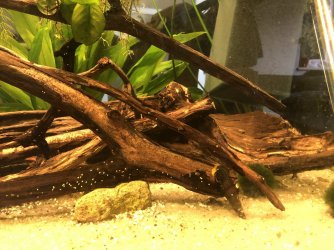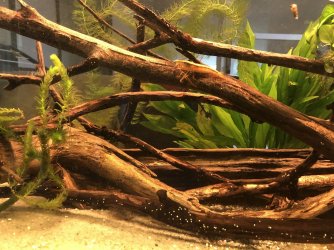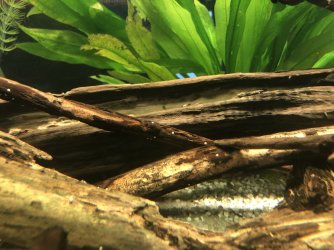Beastije
Fish Addict
So I was speculating some of my tank problems may come from the wood that is in there rotting too fast or too much. I have 3 large pieces and several small ones, taking a lot of tank space. I like the wood in there and want it there, but I am also presoaking other pieces to replace these ones if it shows it is indeed faulty.
On the other forum I attend I was told my wood problem is related to not having any fish managing the wood, like if I had any sort of pleco, it would be different.
I see my tylomelania, neritina and most of the MTS hanging on the wood a lot so I assumed the wood is managed and the rotting parts are being handled, but am I missing on having one more carer? Would my tank benefit from a common small hypancistrus? I initially really wanted an otocinclus and I have the biofilm now I guess, but the tank is at 27-28° and I dont think any of the species will be able to handle it, or not longterm.
I cant find any information on what would "manage" wood best and if it is necessary, so would appreciate info if you have it
On the other forum I attend I was told my wood problem is related to not having any fish managing the wood, like if I had any sort of pleco, it would be different.
I see my tylomelania, neritina and most of the MTS hanging on the wood a lot so I assumed the wood is managed and the rotting parts are being handled, but am I missing on having one more carer? Would my tank benefit from a common small hypancistrus? I initially really wanted an otocinclus and I have the biofilm now I guess, but the tank is at 27-28° and I dont think any of the species will be able to handle it, or not longterm.
I cant find any information on what would "manage" wood best and if it is necessary, so would appreciate info if you have it





